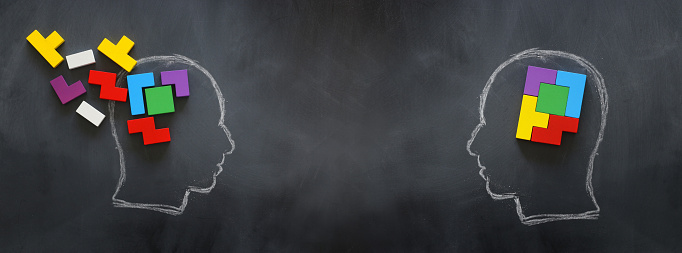
The positives to ADHD that are often overlooked.
Table of Contents
Attention deficit/hyperactivity disorder (ADHD) has long been a diagnosis that many individuals dread hearing. It often leaves individuals more confused due to the contradictory and inconsistency with ADHD research and criteria according to the Diagnostic Statistical Manual 5th edition.
For one, it is puzzling to call it a disorder, because there are so many positive aspects of ADHD that go unrecognized. The way ADHD presents can also be vastly different between male and females and majority of the symptoms for females are not listed in the DSM-5 or on an ADHD assessment. There is also a huge missing piece that I talk more about here. Society has also been trying to force individuals with ADHD to adapt to the neurotypical ways of the world, and that is not fair, and it will not work.
The neurodivergent brain.

The basics of ADHD is that the executive functioning part of the brain operates differently than a neurotypical brain. Executive functioning regulates how an individual manages time, attention, changes focus between tasks, plans and organizes, remembers details, multitasks, and filters words before they are spoken and actions before they are acted on. This part of the brain is not broken for individuals with ADHD, it just operates differently.
One misconception is that individuals with ADHD have a short attention span, but that is not accurate. Picture a neurotypical brain as having a gate keeper that regulates how much stimulus input enters each second of the day; it filters out the irrelevant and lets the relevant information through the gates. Well, the ADHD brain has no gate keeper. Those gates are wide open, and every single bit of stimulus input is flowing through. With no gate keeper, it may appear like someone has a short attention span, but really, they are juggling multiple pieces of information every second. This creates inconsistent attention, but not a deficit in attention.
Hyperactivity.
The hyperactivity part to ADHD can also be misleading. Yes, there are kids and adults with ADHD who have big bursts of energy and can’t seem to sit still for long. However, for many individuals with ADHD and especially for women, hyperactivity mainly impacts the thought process and can create internal chaos. This can be one of the reasons why ADHD can be misdiagnosed.

Hyperfocus.
A frustrating component to ADHD is the ability to “get in the zone” or “hyperfocus,” however, it seems to be inconsistent as to what time of day and how many times a day that zone will happen. This can be frustrating because it is insanely hard to motivate the ADHD brain to do something it does not want to do without the aide of hyperfocus or the zone.
Research has shown that novelty, competition, challenge, and time constraints can kick start this focus. Notice importance and rewards are not one of the motivators. Individuals with ADHD know why it is important and they understand a reward if it is offered, but that is not a motivating factor to get something done.
Standard school systems and jobs typically involve doing work that someone else feels is important. This is why school and the workplace can be so challenging for individuals with ADHD. It is crucial to find a job that has personal meaning and purpose to help maintain the motivated and willingness to get the job done.
Procrastination.

Procrastination is common because it creates a sense of urgency and competing with a time constraint to get something done. Prioritizing and time management are basically non-existent. Therefore, typical planners and organizational tools typically do not work.
The positives to ADHD.
The beautiful side to this is that individuals with ADHD tend to work extremely well under pressure or with fast approaching deadlines. The ability to hyperfocus allows individuals with ADHD to crank through a project or task with speed and efficiency. When interested in something, the energy and motivation is unstoppable. There is actually a high level of awareness to detail due to the vast amount of stimulus input entering the brain every second. There are so many great aspects of ADHD. It is all about finding the right set of rules for each individual.
William Dodson M.D. says it well in that ADHD is not a defect in the nervous system, but a nervous system that operates well with its own set of rules. Find your set of rules and run with them. Keep a record of what gets you into the zone. Is it competition, high level of interest, time constraints? Are there certain topics or activities that you can always get in the zone with? Is there a time of day that you are more likely to get in the zone? Track your behavior and find the answers. This will help you to create your own set of rules and build on your strengths.
